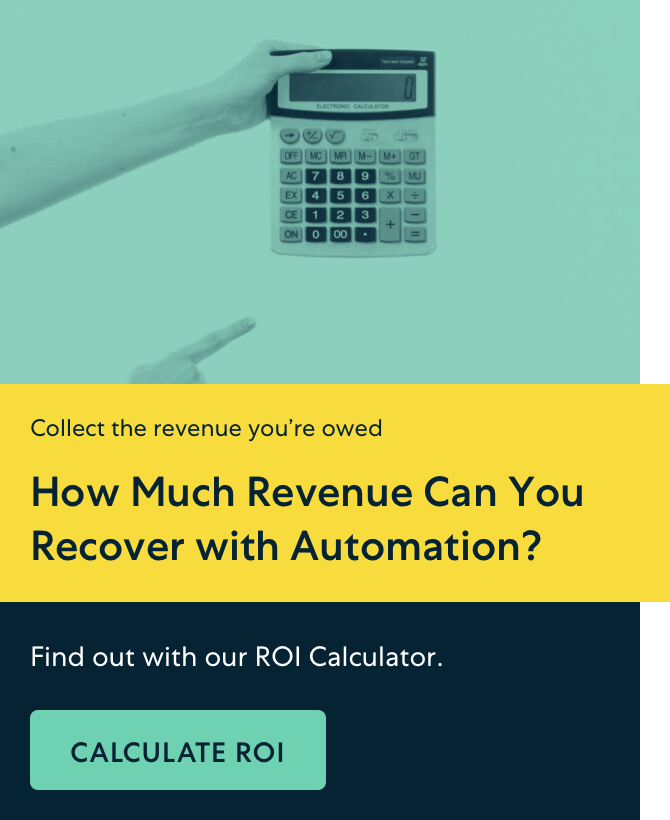SaaS, or Software as a Service, is a cloud-based software distribution model. In this case, the platforms are accessible online for a recurring fee.
SaaS is a thriving industry, thanks to its user-friendly scalability to fit all types and sizes of businesses. However, most companies need help finding and implementing the right SaaS pricing.
It takes a ton of market research, data analysis, and strategic decision-making to get it right. In this guide, we’ll cover various SaaS pricing plans with real-world examples, as well as how to implement your chosen plan effectively.
TL;DR
- SaaS pricing satisfies diverse customer needs while maximizing profits. Common pricing model types are freemium, subscription-based, usage-based, tiered, per-user, and feature-based models.
- Implementing a pricing model is as challenging as choosing the right one. Conduct market research, utilize A/B testing, and continuously adjust your strategies to stay competitive in the long run.
- Balancing affordability and perceived value, predicting evolving user behavior, and updating prices without alienating existing customers are common pricing challenges. Effective communication and data-driven strategies can help SaaS providers overcome them.
6 Types Of SaaS Pricing Models
When it comes to SaaS products, customers are spoiled for choice. A rigid flat-rate pricing strategy isn’t always the best way to stay competitive.
Tailored pricing for different user requirements can make your offerings more attractive. This strategy must align with your business model, long-term goals, and target market. Consider the following pricing options.
1. Freemium
SaaS businesses with a freemium pricing model offer a basic software version for free and only charge for premium features. This approach strikes a balance between widespread adoption and revenue generation.
Freemium attracts a wider customer base since the low price of entry removes barriers for potential customers. Users can assess the platform’s suitability for long-term use without incurring any upfront cost.
However, this 24/7 free access can pose challenges to monetization and upselling. Some free users may not see a need for upgraded plans. Convincing them to pay for additional functionalities requires a compelling value proposition beyond what the free version offers.
Example: Slack. Its free version allows basic communication features such as direct messaging, channels, and file sharing. It’s a free entry point to entice free users to opt for unlimited message storage and integration capabilities.
2. Subscription-based
In subscription-based pricing, customers pay a fixed recurring fee for access to the software. Users who prefer to scale up or down as their needs change can opt for a monthly subscription. Those who rely on the software for their core operations may elect yearly plans for stability and uninterrupted access.
This pricing model has a clear advantage—it provides revenue predictability and offers excellent opportunities for upselling and add-ons. Unlike the freemium model, it helps nurture and expand revenue from renewal subscribers.
However, there’s a significant challenge, particularly for startups. To milk this model for all it’s worth, you must first establish a loyal subscriber base and keep them happy and satisfied enough. You want to avoid churned subscribers by offering nifty extras and continuous updates that match their changing needs.
Example: HubSpot. The popular marketing automation platform employs this model with monthly or annual subscription options. To encourage long-term recurring revenue, they reduce the regular $890 monthly fee to $800 per month for annual plans.
3. Usage-based or pay-as-you-go
Usage-based pricing charges customers based on their actual software usage, much like how you pay for your monthly utilities. It has tiered pricing structures to accommodate different customer needs and usage patterns, including
- Event-based pricing – based on user actions or events
- Volume-based pricing – based on volume like the number of API calls, data storage, or compute resources consumed
This pay-as-you-go approach attracts businesses and users looking to prioritize cost management and adaptability. It helps with their fluctuating or unpredictable workloads. Product development and marketing teams can analyze the most and least used features, which can help refine future strategies.
On the flip side, it can distort pricing models and result in unmet expectations. Some users’ initial estimated usage when signing up for a service may be higher than their actual usage. They may end up paying for resources not fully utilized, leading to dissatisfaction and churn.
Example: Amazon Web Services (AWS). AWS exemplifies this model with metered pricing based on resource consumption. They charge users based on the number of hours those resources are active. Moreover, the hourly rates vary depending on the type of resources (e.g., virtual machines (EC2 instances) or databases (RDS)).
4. Tiered pricing
The tiered pricing model requires you to segment features into different pricing tiers or levels. It consists of the most basic, entry-level options (the most budget-friendly) and the most advanced and sophisticated (the highest-priced). Each must boast a specific set of features from which users can choose the one that best meets their needs.
Tiered pricing suits diverse customer budgets and preferences, making your offerings more inclusive for a wider market reach. It also gives you upsell opportunities as your existing users experience success and expand their operations.
Having multiple tiers can introduce complexity in the pricing structure. When customers are presented with too many choices, they may experience decision paralysis. Those with limited budgets may delay or avoid purchasing altogether because they can’t easily discern which tier offers the best value.
Example: Basecamp. The project management tool offers this pricing for varying levels of functionality and number of team members. Small businesses, for instance, may find the lower price tier feasible and worthwhile to invest in. While larger corporations may decide on a higher price tier to be more cost-effective for their extensive projects.
5. Per-user or per-seat pricing
Per-seat or per-user pricing model charges customers based on the number of users accessing the software. It can be trickier to implement compared to some other pricing models, so be sure to consider the following factors:
- User Categories. Do all users have equal access to features or are there different access tiers based on team roles/responsibilities? E.g., administrative users require more advanced features than standard users.
- Scalability. Plan how this user-based pricing accommodates scalability. Will businesses be able to add or remove users as their team size fluctuates? Or, will they need to commit to a fixed number of users?
- Feature Set. Determine whether certain user levels will have access to specific features. Use it as an upsell opportunity, where you can position premium features at a higher per-user cost.
- Competitor Analysis. How do your competitors’ per-active-user pricing structures look? Knowing the industry’s pricing norms can help you decide if this pricing strategy suits your offerings.
Example: Dropbox. The file-hosting and collaboration platform offers different price levels for smaller ($15/user/month) and larger teams ($24/user/month). It boosts their revenue growth as the client’s user base increases. Its only downside is that it can become less accessible for SMBs or startups with limited budgets.
6. Feature-based pricing
Feature-based, a.k.a. per-feature pricing differentiates rates based on particular functionalities. Instead of bundling all the bells and whistles into one package, you provide a price list of all features. Users can sift through it to customize a plan that aligns perfectly with their requirements.
This pricing model offers higher price points for advanced features or complete suites. Thus, it’s a great way to boost revenue from customers with all-around needs. Its intricate structure, however, may require robust pricing and subscription management systems.
Example: Adobe Creative Cloud. The platform employs this strategy by offering feature sets for various creative needs. Professionals can subscribe to Creative Cloud All Apps for $54.99 monthly or purchase the apps separately.
Once you’ve figured out the right SaaS pricing structure for your business, implementation comes next. In the next section, we’ll cover everything from market research to A/B testing.
How to Implement the Right Pricing Model
Your pricing model determines your profit margin. It needs to capture your product’s full value without deterring new and existing customers.
For B2B SaaS providers, implementing the right model is twice as challenging due to diverse client needs, competitive pressures, and evolving market trends. Follow these strategies to ensure optimal results as you develop and roll out your pricing strategy.
Market research
Market research allows you to understand your target market’s spending power and identify its pain points and desires. This pre-implementation process is the key to creating pricing plans that offer maximum value. With data to back you up, you can set prices that are both affordable and attractive to them.
Conduct surveys and interviews to gather insights into customer preferences and expectations. Here’s a quick 5-step guide to help you get started:
- Segment your audience. Identify distinct buyer personas within your target market (e.g., startups, SMBs, or enterprises).
- Craft persona-centric surveys. Create surveys with questions tailored to each persona’s pain points and desires (e.g., budget and scalability).
- Select the right method. Depending on accessibility, distribute your surveys online, via phone interviews, or during in-person discussions.
- Recruit participants. Reach out through email, social media, or professional networks to ensure each persona is well-represented.
- Conduct surveys and interviews. Gather responses in a conversational tone to encourage candid feedback.
Your findings can help you create a value-based pricing structure that matches your target market’s perceived value.
Pro tip: Benchmark your prices against competitors for competitor-based pricing. You can also conduct a cost-based pricing (a.k.a. cost-plus pricing) evaluation to ensure your pricing covers production costs while providing reasonable net profits.
A/B testing
A/B testing involves implementing two or more pricing models and comparing their performance. It helps weed out less efficient pricing strategies, allowing you to focus on the ones that yield the best results. Identify which method provides better customer feedback, conversion rates, and retention.
To do so, specify the metrics you want to optimize such as customer acquisition cost (CAC), lifetime value (LTV), and churn rate. The goal here is to examine customer responses side by side with your KPIs.
Let’s say your A/B testing reveals that tiered pricing reduces churn rate and increases LTV compared to a per-user model. In that case, shift your strategy. Continuous analysis allows you to fine-tune your pricing for better results over time.
Adjusting & evolving
Staying competitive, attracting new customers, retaining existing ones, and optimizing revenue all depend on how well you tweak your pricing strategies. Updates shouldn’t be performed only when introducing new features or integrations.
Customer needs change. New players enter the market. Existing competitors may implement price increases. These factors necessitate continuous monitoring; otherwise, you risk missing out on growth opportunities and lagging behind your competitors.
Monitor your performance periodically to identify growth or decline trends. Some metrics to keep regular tabs on are your monthly recurring revenue (MRR) and number of active users.
Notice if the drop in numbers is consistent. This often indicates pricing misalignment that needs attention. Ignoring this pattern may prompt customers to downgrade to lower-priced plans or even churn to competitors. Understanding the top SaaS pricing challenges can clue you in on how to get around them based on your business needs.
Top Challenges in SaaS Pricing
SaaS pricing models have their fair share of pitfalls because of how often new technology and trends surface in the software industry. Knowing these beforehand can help you navigate everything more effectively. Here are some of the major challenges to be aware of.
- Balancing affordability and perceived value. Offering steep discounts to increase affordability can erode your profit margins. It may be fine for some users, but not for others. Communicate and highlight the value of your product, so all target users understand why it’s worth investing in.
- Tracking and predicting user behavior. User usage patterns can help you identify the best SaaS product pricing. However, they shift frequently. Analyzing them requires labor-intensive data collection and processing. Good news: Automated billing tools like Stax Bill use advanced analytics to track and analyze how these behaviors affect your recurring revenue.
- Updating prices without alienating existing customers. Price changes can drive away patrons if you’re not prudent. Publish a pricing page that clarifies the factors that caused the change. Offer incentives like loyalty discounts or extended trial periods to existing customers. This way, they can transition gradually without being overwhelmed by the price increases.
Challenges are inevitable in SaaS pricing. Turn them into opportunities for growth and success by employing effective communication strategies and leveraging technology.
Wrapping Up: Your Guide to Successful SaaS Pricing
Aligning your pricing strategy with your business goals is a non-negotiable. It directly impacts your revenue, profitability, and competitiveness in the industry. How you charge your customers defines how effectively you can reach your financial objectives.
But simply ditching a flat-rate pricing model for more flexible ones won’t cut it. One must also keep the models targeted to their user base to achieve success and sustained profit margin. Stay agile, keep observing, and be ready to adjust your strategies as your business and market dynamics change.
To understand how Stax Bill’s analytics and subscription management solution can help with this, contact us today.
To read more on our pricing strategies series, check out:
FAQs about SaaS
Q: What is SaaS or Software as a Service?
SaaS, or Software as a Service, is a cloud-based software distribution model where platforms are accessible online for a recurring fee. This business model is scalable, suiting all types and sizes of businesses.
Q: What are SaaS Pricing Models?
SaaS Pricing Models are strategic plans that determine how a SaaS (Software as a Service) company charges for its software. Common SaaS pricing models include freemium, subscription-based, usage-based, tiered, per-user, and feature-based models.
Q: What is a Freemium Pricing Model?
In a freemium pricing model, SaaS businesses offer a basic version of the software for free while charging for premium features. This approach allows for potential customers to assess the platform’s suitability for long-term use without incurring any upfront cost.
Q: What is Subscription-Based Pricing?
In subscription-based pricing, customers pay a fixed recurring fee for access to the software. This pricing model provides revenue predictability and offers excellent opportunities for upselling and add-ons.
Q: What is Usage-Based Pricing?
Usage-based pricing charges customers based on their actual usage of the software. It uses tiered pricing structures to accommodate different customer needs and usage patterns. However, it may lead to dissatisfaction if a customer’s estimated usage is higher than actual usage, resulting in payments for unutilized resources.
Q: What is the Tiered Pricing Model?
The tiered pricing model segments features into different pricing tiers or levels to accommodate diverse customer budgets and preferences. However, the multitude of choices may lead to decision paralysis among customers.
Q: What is the Per-User Pricing Model?
The per-user (or per-seat) pricing model charges customers based on the number of users accessing the software. Factors to consider when implementing this model include user categories, scalability, feature set, and competitor analysis.
Q: What is a Feature-Based Pricing Model?
The feature-based (per-feature) pricing model offers differentiation of rates based on specific software functionalities. Instead of bundling all features into one package, customers can customize a plan that aligns with their requirements.
Q: How do you implement a SaaS Pricing Model effectively?
Implementing a SaaS pricing model effectively involves numerous strategies such as market research, A/B testing, and continuous pricing updates.
Q: What are the challenges in SaaS Pricing?
Balancing affordability with perceived customer value, predicting evolving user behavior, and updating prices without alienating existing customers are some common challenges in SaaS pricing. These can be navigated successfully through effective communication strategies and technology utilization.








